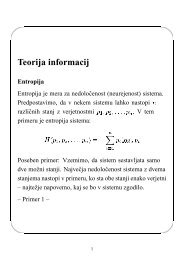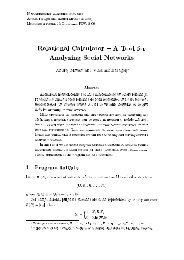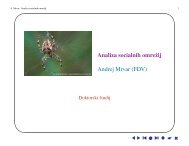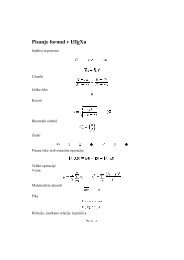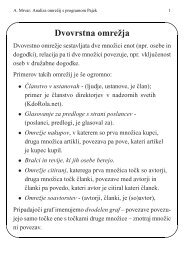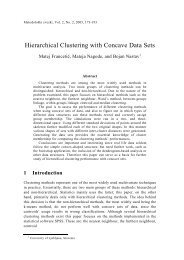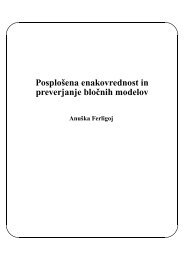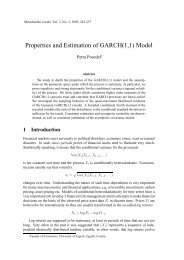Computing Regular Equivalence: Practical and ... - CiteSeerX
Computing Regular Equivalence: Practical and ... - CiteSeerX
Computing Regular Equivalence: Practical and ... - CiteSeerX
You also want an ePaper? Increase the reach of your titles
YUMPU automatically turns print PDFs into web optimized ePapers that Google loves.
40 Martin Everett <strong>and</strong> Steve Borgatti6 Algorithmic complexityWe have already mentioned the complexity of finding the automorphicallyequivalent vertices. We also gave a polynomial time algorithm for finding themaximal regular coloration <strong>and</strong> we noted that it is easy to find structurallyequivalent vertices. The use of combinatorial optimisation routines to findcolorations with a specified number of colours suggests that these are non-trivialproblems.We now look at the complexity of finding if a regular coloration exists with aspecified number of colours. We shall suppose that our graphs or digraphs have nvertices. The image graph of a coloration is a graph (or digraph) with colours asvertices <strong>and</strong> an edge connects colour A to colour B if there is an edge joining avertex coloured A to a vertex coloured B in the original graph.Suppose we wish to check for n-colours. Since this is always a regularcoloration then there is nothing to do <strong>and</strong> the problem is in the class P. It is alsoeasy to check for n-1 colours. In this case the pair of vertices coloured the samemust be connected to <strong>and</strong> from the same vertices (that is they are structurallyequivalent) <strong>and</strong> hence this belongs to the class P.At the other extreme suppose we wish to use just one colour. Clearly this mustbe in the class P since we simply colour all the vertices <strong>and</strong> check it is regular.However as in the n-1 case we can characterise the graphs <strong>and</strong> digraph which havea 1-regular coloration. For a graph to have a 1–regular coloration it is either thenull graph or is a graph with no isolates.For a digraph it is either the null graph or it has no sources, sinks or isolates.The simplest interesting case is a 2-regular coloration <strong>and</strong> this was investigatedfor graphs by Roberts <strong>and</strong> Sheng (1999). They show that finding a 2-regularcoloration for a graph belongs to the class NP. It follows that for digraphs theproblem cannot be in P <strong>and</strong> almost certainly belongs to the class NP as well. Inaddition they show that for certain image graphs we can characterise 2-regularcolorations. These are as follows. If G was the original graph then the followingimage graphs are possible:R 1 R 2R 3 R 4• R 1 is possible iff G is a null graph• R 2 is possible iff G has at least one edge <strong>and</strong> at least one isolated vertex• R 3 is possible iff G is disconnected with no isolates• R 4 is possible iff G is bipartite with no isolates.




